Books on Shakespeare (Reviews)Featured Review: Berryman on Shakespeare
Poet John Berryman's engaging relationship with the Bard in lectures and essays.
John Berryman, hailed as an American poet of remarkable insight and talent, sustained a life-long passion for Shakespeare matched by only a few. Much like Keats, Berryman had a consuming appetite for all things Shakespeare that shaped and nurtured his own writing, compelling him to cultivate his own poetic voice. Berryman won the Charles Oldham Shakespeare Scholarship at Cambridge University in 1937 when he was just 23 years old, and went on to give venerated lectures on Shakespeare at the finest institutions, including Harvard and Princeton, while maintaining a position on the faculty of the University of Minnesota. As his reputation as a distinguished lecturer developed, so too did his reputation as a gifted poet in his own right, culminating in the publication of Homage to Mistress Broadstreet (1956), praised by Edmund Wilson as "the most distinguished long poem by an American since The Waste Land." The volumes 77 Dream Songs (1964) and His Toy, His Dream, His Rest (1968) soon followed, and earned him many prestigious awards, including the National Book Award and the coveted Pulitzer Prize for Poetry.
With Shakespeare always foremost on his mind, Berryman worked tirelessly on organizing his decades of research into one definitive book to be called Shakespeare's Reality. Tragically, Berryman committed suicide in 1972, before he could finish the manuscript. This is where editor John Haffenden steps in to sort out the publishable essays and memoirs left unfinished in a jumbled mass of thousands of pages of Berryman�s literary criticism. Haffenden has divided the collection into five major sections covering Berryman's work on Shakespeare from the late 1940s until the poet's death in 1972. The book includes Berryman�s biographical studies on Shakespeare in a series of eight lectures, and his impressions of Shakespeare�s plays in eight short essays (many of them unfinished) on The Sonnets, The Comedy of Errors, King John, 2 and 3 Henry VI, The Two Gentlemen of Verona, Macbeth and 2 Henry IV. Berryman�s work on the true identity of the mysterious Mr. W.H. of the Sonnets and the possible co-author of The Taming of the Shrew is also featured in the collection, as is his exhaustive research on King Lear. Finally, as an addendum, Haffenden leaves us with Berryman�s last piece of writing on the Bard: the germ of Shakespeare's Reality.
Despite some drawbacks (part three on the differences between the two major texts of "King Lear" is surprisingly dry and will overwhelm most readers, as will the work on the mystery of Mr. W. H., which has been branded by other scholars as "completely mistaken"), Haffenden�s selection of Berryman�s essays is appropriate and entertaining. The writings reveal Berryman�s profound understanding of Shakespeare's characters and imagery, and they are peppered with amusing personal reflections, such as his memory of seeing John Gielgud play Richard II "so exquisitely, so weakly, with such self-pity, such grotesquerie, so ridiculously, that the proper young lady with me threatened to leave me in my stall if I did not stop laughing."
Of particular interest are Berryman�s essays on Shakespeare's life. The quality of writing surpasses most scholarly and tedious retellings of the biographical facts known to us. Berryman introduces us to the Bard all over again with his own inviting style:
"suppose with me a time, a place, a man who was waked, risen, washed, dressed, fed, congratulated, on a day in latter April long ago -- about April 22, say, of 1594 -- whether at London in lodgings or at a friend's or a tavern, a small house in the market town Stratford some hundred miles by miry ways northwest, or at Tichfield House a little closer southwest, or elsewhere, but somewhere in England at the height of the Northern Renaissance; a different world. Alone at some hour in one room, his intellectual and physical presence not as yet visible to us although we know its name, seated or standing, highlone in thought. He is thirty years old today..."
Above all, Berryman's Shakespeare allows us to witness the power of a literary demigod reaching through the centuries to ignite a fire in another poet's soul; a poet struggling to comprehend the boundlessness -- and limitations -- of his own creative genius:
"We judge others by ourselves. On the other hand, before not only the grand mass of this creation but before some detailed triumph of imaginative design within a play, we do reasonably pause with astonishment. Sometimes, without warning, in a short speech, the soul of a man seems indeed to surface, for an instant, before it returns forever to the depths. Sometimes a series of poet's phrases will drag at our profoundest thought as if, truly, we overheard the soul of the world murmuring truths to herself. In the face of this fundamental problem, which I think it better to admit candidly than to take for granted, I think I must offer you some general reassurances. It is reassuring to consider that Shakespeare wrote four failures, plays that, notwithstanding the immense attractive power of their author's name, few have ever cared to produce and mostly scholars read. These failures are "The Two Gentlemen of Verona", "King John", "All's Well That Ends Well", and "Timon of Athens.... The reasons for his failure in each case were different, but at least he was always capable of failure, and it is pleasant to know this."
More Reviews
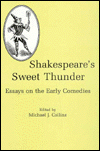 Shakespeare's Sweet Thunder: Essays on the Early Comedies has some great information on The Taming of the Shrew in particular. The chapter entitled "Kate, Bianca, Ruth, and Sarah: Playing the Woman's Part in The Taming of the Shrew" is an excellent resource for anyone interested in Shakespeare's female characters. Shakespeare's Sweet Thunder: Essays on the Early Comedies has some great information on The Taming of the Shrew in particular. The chapter entitled "Kate, Bianca, Ruth, and Sarah: Playing the Woman's Part in The Taming of the Shrew" is an excellent resource for anyone interested in Shakespeare's female characters. | | _____ | 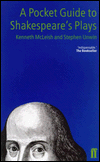 A Pocket Guide to Shakespeare's Plays is useful for actors, directors, students, or anyone going to see a Shakespeare performance. It is affordable and handy for quick facts about the Bard. A Pocket Guide to Shakespeare's Plays is useful for actors, directors, students, or anyone going to see a Shakespeare performance. It is affordable and handy for quick facts about the Bard. | | _____ | 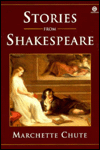 Stories from Shakespeare has been a tremendously popular book since it was first released in the 1950s. Author Marchette Chute re-tells the plot of each Shakespeare play in wonderfully entertaining and easy-to- understand prose. This would be an ideal book for children ages 9 to 13, and would really help give them a lifelong appeaciation for the work of Shakespeare. Stories from Shakespeare has been a tremendously popular book since it was first released in the 1950s. Author Marchette Chute re-tells the plot of each Shakespeare play in wonderfully entertaining and easy-to- understand prose. This would be an ideal book for children ages 9 to 13, and would really help give them a lifelong appeaciation for the work of Shakespeare. | | _____ | 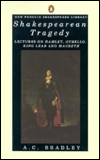 Shakespearean Tragedy: Lectures On Hamlet, Othello, King Lear And MacBeth . This series of lectures by A.C. Bradley is one of the most important scholarly works in the entire canon of Shakespearean criticism. I have worn out my own copy of this brilliant discussion of Shakespeare's great tragedies. Shakespearean Tragedy: Lectures On Hamlet, Othello, King Lear And MacBeth . This series of lectures by A.C. Bradley is one of the most important scholarly works in the entire canon of Shakespearean criticism. I have worn out my own copy of this brilliant discussion of Shakespeare's great tragedies. | | _____ | 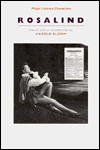 Rosalind (Bloom's Major Literary Characters Series). There are not many books written about this Shakespearean heroine, but luckily we have one that gives her the attention she deserves. Rosalind's role as both student and teacher of the ways of love is stressed in this volume, as are the the lessoned her from her gender experiments. Rosalind (Bloom's Major Literary Characters Series). There are not many books written about this Shakespearean heroine, but luckily we have one that gives her the attention she deserves. Rosalind's role as both student and teacher of the ways of love is stressed in this volume, as are the the lessoned her from her gender experiments. | | _____ | 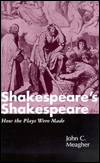 Shakespeare's Shakespeare: How the Plays Were Made provides an interesting re-evaluation of some of the conceptions about Shakespeare's authorial intentions in the plays. His focus is on Romeo and Juliet; Hamlet; King Lear; A Midsummer Night's Dream; As You Like It; Richard II; and Henry IV, Part I. Shakespeare's Shakespeare: How the Plays Were Made provides an interesting re-evaluation of some of the conceptions about Shakespeare's authorial intentions in the plays. His focus is on Romeo and Juliet; Hamlet; King Lear; A Midsummer Night's Dream; As You Like It; Richard II; and Henry IV, Part I. | | _____ | 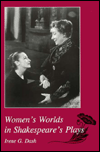 Women's Worlds in Shakespeare's Plays focuses on five of Shakespeare's plays, All's Well that Ends Well, Hamlet, Macbeth, Twelfth Night, and A Midsummer Night's Dream. It is a wonderful exploration into conceptions of Shakespeare's female characters, and their battles with morality and twisted notions of sexuality. Women's Worlds in Shakespeare's Plays focuses on five of Shakespeare's plays, All's Well that Ends Well, Hamlet, Macbeth, Twelfth Night, and A Midsummer Night's Dream. It is a wonderful exploration into conceptions of Shakespeare's female characters, and their battles with morality and twisted notions of sexuality. | | _____ | 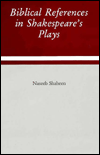 Biblical References in Shakespeare's Plays contains all the passages from the Bible found in Shakespeare's plays, and examines the Bible in Shakespeare's day. It is a wonderful reference for scholars and anyone who is in need of interesting material for a great thesis. Biblical References in Shakespeare's Plays contains all the passages from the Bible found in Shakespeare's plays, and examines the Bible in Shakespeare's day. It is a wonderful reference for scholars and anyone who is in need of interesting material for a great thesis. | | _____ |  Moral Philosophies in Shakespeare's Plays is a guide to the prevailing themes and moral dilemmas presented in Shakespeare's plays. It would make a great gift for someone interested in the finer aspects of Shakespeare's work. Moral Philosophies in Shakespeare's Plays is a guide to the prevailing themes and moral dilemmas presented in Shakespeare's plays. It would make a great gift for someone interested in the finer aspects of Shakespeare's work. | | _____ | 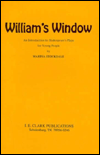 William's Window: An Introduction to Shakespeare's Plays for Young People is a great introduction to the plays for children. At $2.80 the price is right too. William's Window: An Introduction to Shakespeare's Plays for Young People is a great introduction to the plays for children. At $2.80 the price is right too. | | _____ | 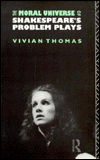 The Moral Universe of Shakespeare's Problem Plays explains why some of Shakespeare's works are called problem plays, and provides the history of the plays, with interpretations as well. The Moral Universe of Shakespeare's Problem Plays explains why some of Shakespeare's works are called problem plays, and provides the history of the plays, with interpretations as well. | | _____ | 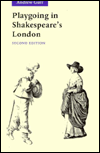 Playgoing in Shakespeare's London is a wonderful resource for anyone who needs to know anything or everything about the people who went to see Shakespeare's plays. It covers everything from performing conditions to auditorium behaviour. An invaluable resource! Playgoing in Shakespeare's London is a wonderful resource for anyone who needs to know anything or everything about the people who went to see Shakespeare's plays. It covers everything from performing conditions to auditorium behaviour. An invaluable resource! | | _____ | 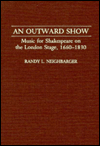 An Outward Show: Music for Shakespeare on the London Stage, 1660-1830 provides a detailed look at the music accompanying Shakespeare's plays during 170 years of performances. It also contains information about Shakespearean music on the Elizabethan and Jacobean stage. Musical examples illustrate the text. An Outward Show: Music for Shakespeare on the London Stage, 1660-1830 provides a detailed look at the music accompanying Shakespeare's plays during 170 years of performances. It also contains information about Shakespearean music on the Elizabethan and Jacobean stage. Musical examples illustrate the text. |
| Critical Essays on Shakespeare's Othello focuses on the key issues of reality, feigned reality, and duality in the play, in addition to exploring the role of gender and adultery. Particularly interesting is the chapter called "Ethiops Washed White: Moors of the Nonvillainous Type". | | _____ | | Shakespeare's Sonnets: Critical Essays, is an essential book for every English undergraduate and graduate student. Every major branch of literary theory is used in this book to explain the sonnets, from new historicism to cultural materialism and formalism. It is an expensive book ($95), but should be looked at as an investment that will pay for itself if you intend to pursue a degree or career in the humanities. |
|
















 Shakespeare's Sweet Thunder: Essays on the Early Comedies has some great information on The Taming of the Shrew in particular. The chapter entitled "Kate, Bianca, Ruth, and Sarah: Playing the Woman's Part in The Taming of the Shrew" is an excellent resource for anyone interested in Shakespeare's female characters.
Shakespeare's Sweet Thunder: Essays on the Early Comedies has some great information on The Taming of the Shrew in particular. The chapter entitled "Kate, Bianca, Ruth, and Sarah: Playing the Woman's Part in The Taming of the Shrew" is an excellent resource for anyone interested in Shakespeare's female characters.  A Pocket Guide to Shakespeare's Plays is useful for actors, directors, students, or anyone going to see a Shakespeare performance. It is affordable and handy for quick facts about the Bard.
A Pocket Guide to Shakespeare's Plays is useful for actors, directors, students, or anyone going to see a Shakespeare performance. It is affordable and handy for quick facts about the Bard.  Stories from Shakespeare has been a tremendously popular book since it was first released in the 1950s. Author Marchette Chute re-tells the plot of each Shakespeare play in wonderfully entertaining and easy-to- understand prose. This would be an ideal book for children ages 9 to 13, and would really help give them a lifelong appeaciation for the work of Shakespeare.
Stories from Shakespeare has been a tremendously popular book since it was first released in the 1950s. Author Marchette Chute re-tells the plot of each Shakespeare play in wonderfully entertaining and easy-to- understand prose. This would be an ideal book for children ages 9 to 13, and would really help give them a lifelong appeaciation for the work of Shakespeare.  Shakespearean Tragedy: Lectures On Hamlet, Othello, King Lear And MacBeth . This series of lectures by A.C. Bradley is one of the most important scholarly works in the entire canon of Shakespearean criticism. I have worn out my own copy of this brilliant discussion of Shakespeare's great tragedies.
Shakespearean Tragedy: Lectures On Hamlet, Othello, King Lear And MacBeth . This series of lectures by A.C. Bradley is one of the most important scholarly works in the entire canon of Shakespearean criticism. I have worn out my own copy of this brilliant discussion of Shakespeare's great tragedies.  Rosalind (Bloom's Major Literary Characters Series). There are not many books written about this Shakespearean heroine, but luckily we have one that gives her the attention she deserves. Rosalind's role as both student and teacher of the ways of love is stressed in this volume, as are the the lessoned her from her gender experiments.
Rosalind (Bloom's Major Literary Characters Series). There are not many books written about this Shakespearean heroine, but luckily we have one that gives her the attention she deserves. Rosalind's role as both student and teacher of the ways of love is stressed in this volume, as are the the lessoned her from her gender experiments.  Shakespeare's Shakespeare: How the Plays Were Made provides an interesting re-evaluation of some of the conceptions about Shakespeare's authorial intentions in the plays. His focus is on Romeo and Juliet; Hamlet; King Lear; A Midsummer Night's Dream; As You Like It; Richard II; and Henry IV, Part I.
Shakespeare's Shakespeare: How the Plays Were Made provides an interesting re-evaluation of some of the conceptions about Shakespeare's authorial intentions in the plays. His focus is on Romeo and Juliet; Hamlet; King Lear; A Midsummer Night's Dream; As You Like It; Richard II; and Henry IV, Part I.  Women's Worlds in Shakespeare's Plays focuses on five of Shakespeare's plays, All's Well that Ends Well, Hamlet, Macbeth, Twelfth Night, and A Midsummer Night's Dream. It is a wonderful exploration into conceptions of Shakespeare's female characters, and their battles with morality and twisted notions of sexuality.
Women's Worlds in Shakespeare's Plays focuses on five of Shakespeare's plays, All's Well that Ends Well, Hamlet, Macbeth, Twelfth Night, and A Midsummer Night's Dream. It is a wonderful exploration into conceptions of Shakespeare's female characters, and their battles with morality and twisted notions of sexuality.  Biblical References in Shakespeare's Plays contains all the passages from the Bible found in Shakespeare's plays, and examines the Bible in Shakespeare's day. It is a wonderful reference for scholars and anyone who is in need of interesting material for a great thesis.
Biblical References in Shakespeare's Plays contains all the passages from the Bible found in Shakespeare's plays, and examines the Bible in Shakespeare's day. It is a wonderful reference for scholars and anyone who is in need of interesting material for a great thesis.  Moral Philosophies in Shakespeare's Plays is a guide to the prevailing themes and moral dilemmas presented in Shakespeare's plays. It would make a great gift for someone interested in the finer aspects of Shakespeare's work.
Moral Philosophies in Shakespeare's Plays is a guide to the prevailing themes and moral dilemmas presented in Shakespeare's plays. It would make a great gift for someone interested in the finer aspects of Shakespeare's work.  William's Window: An Introduction to Shakespeare's Plays for Young People is a great introduction to the plays for children. At $2.80 the price is right too.
William's Window: An Introduction to Shakespeare's Plays for Young People is a great introduction to the plays for children. At $2.80 the price is right too.  The Moral Universe of Shakespeare's Problem Plays explains why some of Shakespeare's works are called problem plays, and provides the history of the plays, with interpretations as well.
The Moral Universe of Shakespeare's Problem Plays explains why some of Shakespeare's works are called problem plays, and provides the history of the plays, with interpretations as well.  Playgoing in Shakespeare's London is a wonderful resource for anyone who needs to know anything or everything about the people who went to see Shakespeare's plays. It covers everything from performing conditions to auditorium behaviour. An invaluable resource!
Playgoing in Shakespeare's London is a wonderful resource for anyone who needs to know anything or everything about the people who went to see Shakespeare's plays. It covers everything from performing conditions to auditorium behaviour. An invaluable resource!  An Outward Show: Music for Shakespeare on the London Stage, 1660-1830 provides a detailed look at the music accompanying Shakespeare's plays during 170 years of performances. It also contains information about Shakespearean music on the Elizabethan and Jacobean stage. Musical examples illustrate the text.
An Outward Show: Music for Shakespeare on the London Stage, 1660-1830 provides a detailed look at the music accompanying Shakespeare's plays during 170 years of performances. It also contains information about Shakespearean music on the Elizabethan and Jacobean stage. Musical examples illustrate the text. 